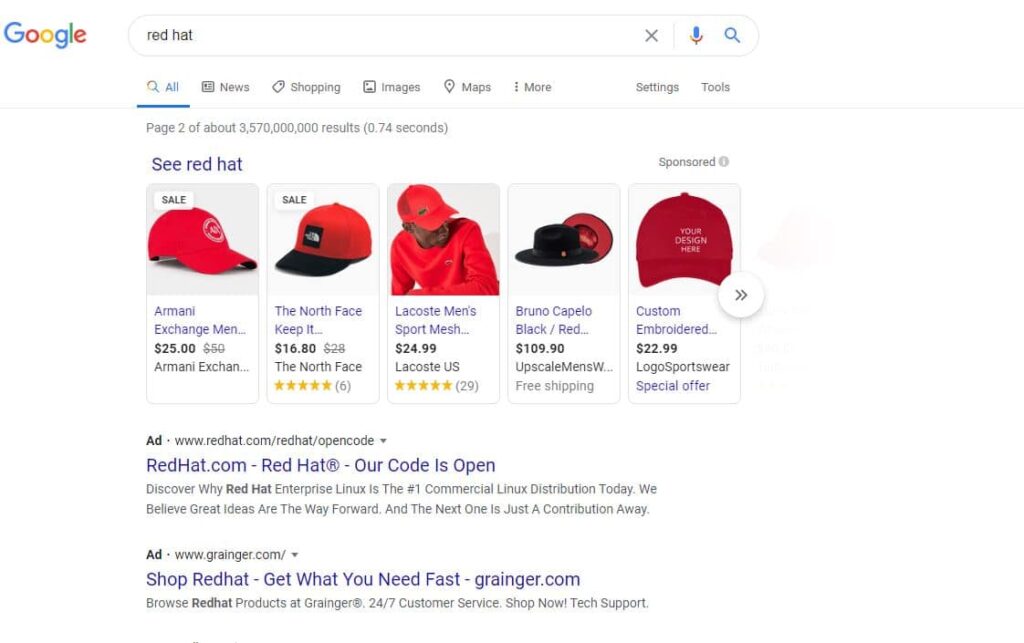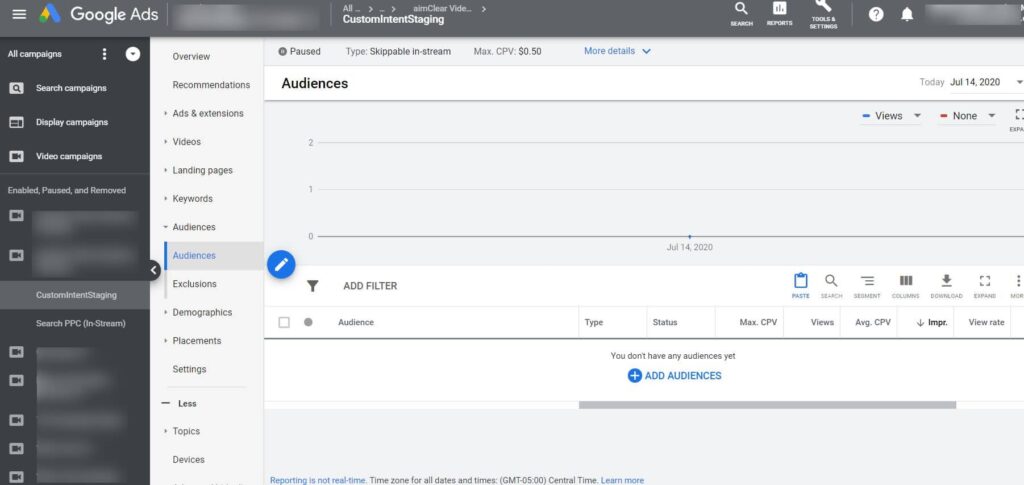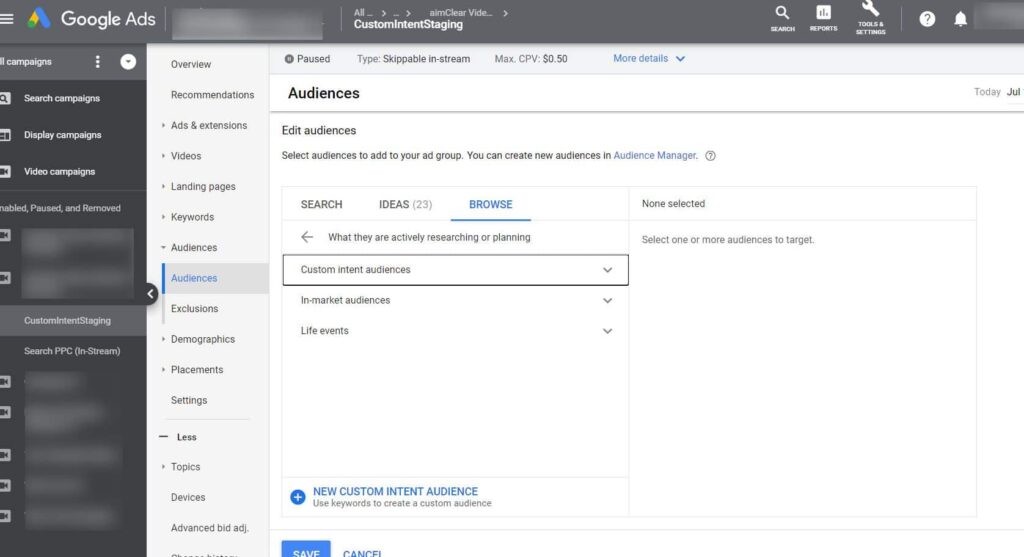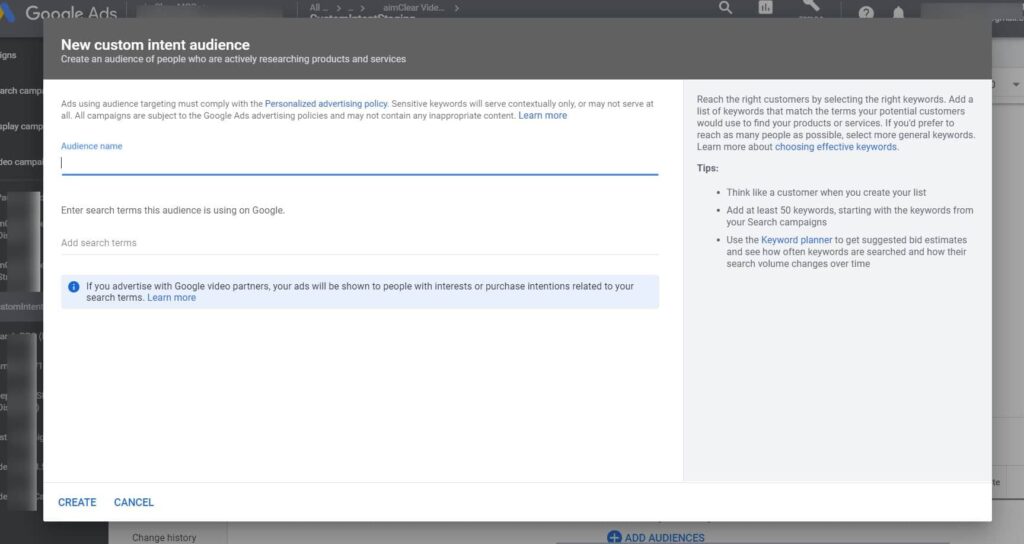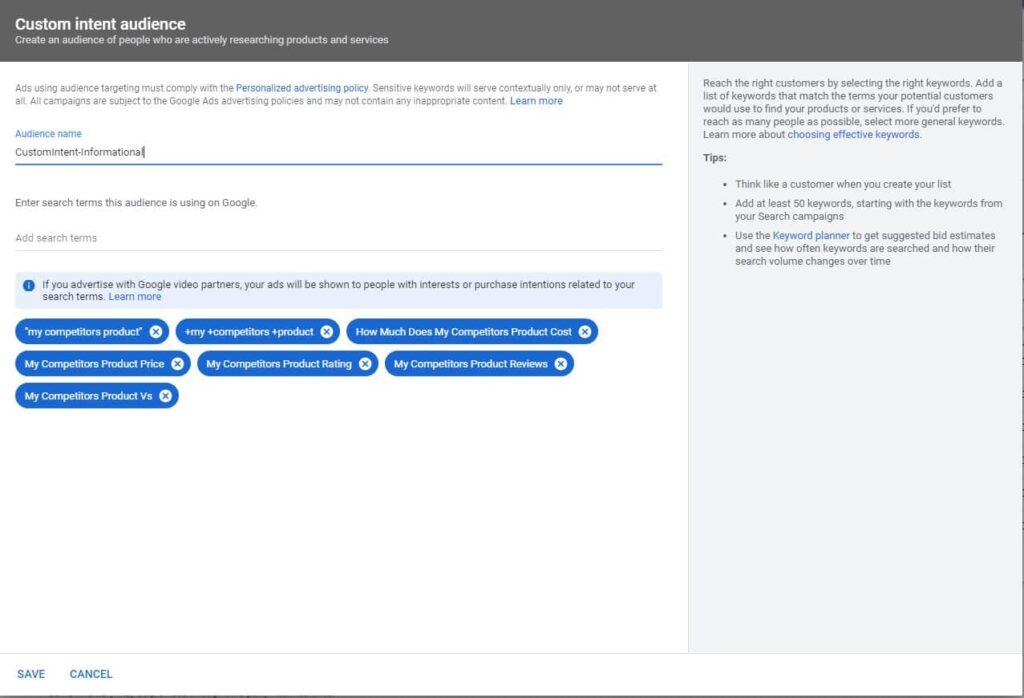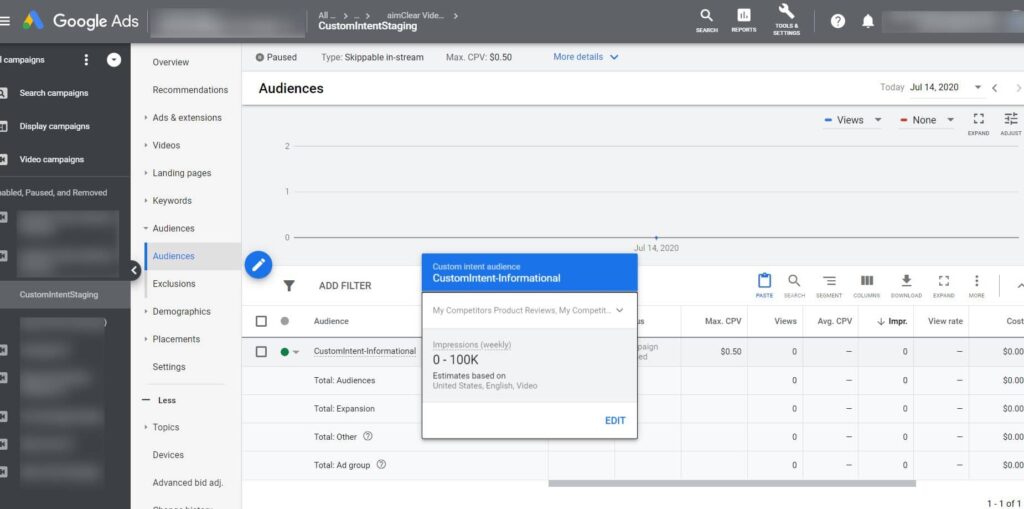Whether you’ve worked in paid search marketing for 2 years or 10, you will have likely seen firsthand how dramatically search CPCs can inflate for keywords, year over year, or even quarter over quarter. Some of the inflation culprits include:
- Emergent, direct competitors to your product or service, hyper focused on your “core” keyword set. They might have even used competitive paid search tools like Spyfu to straight up lift your keyword targeting. If a keyword is a conversion driver for your business, your competitors likely have taken note as well.
- Review engines and paid listings (SoftwareAdvice, Capterra, Getapp) bidding on your keywords, usually in the software space. They’ll park their ads on informational searches in your niche and then resell that traffic to you if you bother with their listings product. Oh, and they’re really good at it.
- Online retailers (Amazon, Ebay, Etsy, etc.) bidding broad and (sometimes) getting it wrong.
- Straight up idiots with a bunch of broad match terms and a budget
Even in the absence of observable competition, over the years, we see CPCs steadily creep upwards.
For many verticals, your core “customer driver” keyword’s value is likely well-known and coveted by your competitors, while search demand for these terms may flatten or stagnate. It’s an increasingly expensive dilemma for search marketers.
But what if I told you that you could reach this same search audience (based on their actual searches), in YouTube, often at fraction of the CPCs?
Let’s talk about custom intent audience targeting in YouTube!
Custom Intent Audiences in Youtube – Why It’s Different And Special
You might be familiar with custom intent in Display – Google made a push in the last couple of years to move advertisers from audience keywords to custom intent keywords. Google Display Ads Help tries to explain how they work:
“Sometimes your ads may show on placements that seem unrelated to your keywords. Depending on your keyword setting, your ads instead may show to audiences based on their recent browsing history or other factors, rather than the content of the page they’re currently viewing.”
It’s kind of a black box approach that attempts to assign an audience to your keywords based on maybe placement context, or maybe search behavior, or both.
Custom Intent Audiences on Youtube works differently – it uses keywords to create audiences based on actual previous searches for those keywords. Straight from the horse’s mouth:
Custom intent audiences can help you reach new customers on YouTube based on the terms they use to search for your products or services on Google.com
What Does This Mean and Why Is it Cool?
The same audience you shelled out big bucks to reach with Search Ads in Google can also be reached using those same keywords, albeit, on YouTube with YouTube’s ad units. Here are some ways to re-use your search keyword set for YouTube Custom Intent Audience:
- Make an audience based on your absolute most expensive, least consistent converter terms – Skip the pricey SERP slug fest; you know those folks have some conversion proclivity, meet them on YouTube.
- Your competitor’s terms – You’re likely paying an arm and a leg here, and your quality score likely isn’t doing you any favors. Avoid the brand term bidding arms race and turn those keywords into a custom intent audience.
- High volume informational queries – You might break the bank running search ads to folks who don’t yet know what they want. Outside of search, you likely have some time to reach them on YouTube – it might even be the better medium to meet those folks at that point in the buyer’s journey.
A word of caution: After creating these audiences, you will be targeting them with YouTube ads, on YouTube, not the SERPs. You may miss out on the following:
- Temporal benefits of the most impulsive “ready to buy” searchers – Folks in this audience bucket may be seeing your ad well after they made a purchase decision. Strike when the iron is cold!
- Advantages of various search ad units – responsive search ads variations, character limits, useful extensions, local search enhancements, social proof from seller ratings etc.
- Simplicity of text based ad unit vs. running poor video content – if you don’t have strong video content or the capability to create video, you will likely not see great results. People may not click, or will maybe just think you suck if you serve up whack video content where your text ads normally shine. (opportunity to link to maybe another AIMCLEAR video post) The good news is that it’s easier than ever to create competent video – major brands are running ads shot on cell phones right now! Emergent smart video tools can take a series of static images and turn them into something more compelling. Take what’s working in search and adapt to the format!
Bottom line: If you have a keyword list, some competent video content and creative mind, you don’t have to pay a premium to reach your same search audiences. Let us show you!
How To Do It: Setting Up Your Custom Intent Audience
Hop into Google Ads, create a blank video campaign and adgroup to get started.
Navigate over to audiences -> browse and select Custom Intent Audiences
Give your new audience a name and get ready to plug in search terms.
Start plugging in your search terms! Match types seem to register here, though we have not seen anything officially documented (or heard anecdotally from reps) if there are any key differences in the way they are treated.
Google recommends at least 50 keywords in a given audience, but you don’t need 50 to serve!
Audience data doesn’t really populate in real time during the audience build process, or even in completed, long running custom intent audiences. What to do?
- If you are targeting keywords you have previously bid on, you can use your own impression data to directionally infer audience size.
- If the keywords are new, Google Ads’ Keyword Planner tool is actually your best source of potential audience size data.
Two things to note:
Your audience still has to be watching videos on YouTube that are eligible for ads and within the bounds of any content restrictions you set at the campaign or ad group level. If they don’t YouTube, they won’t see you!
Whether you’re using Keyword Planner data or your own impression data from previously run search ads, make note of large differences in impressions between keywords. You don’t get tailored insight as to which keywords in a Custom Intent Audience triggered the ad.
If the keywords are too many and varied, you won’t learn what keywords correspond to desired marketing outcomes. If your keywords are too few, with little to no search volume, your ads may not be eligible to serve at all. If you want insight, you will need to play with different levels of audience bucketing.
Fun Time: Additional “Outside of the Box” Uses for Custom Intent Targeting
Format: Search Keywords -> Affinity for Product or Service
The Searches: AshleyMadison.com, “How to Get Away with Affair”, +Hide +Texts +from +Spouse
The Product/Service: Divorce Attorney, Counseling
The Searches: specific vehicle check engine light codes, what does an exclamation light mean on a toyota camry, “why does my car always smell like syrup”
The Product/Service: New/Used auto dealer, specialty mechanic shop
The Searches: non-medical descriptions for various eye conditions, “blurry vision”, “I can’t see close, but I can see far?”
The Product/Service: Ophthalmologist office (verification for HIPAA compliance pending)
The Searches: warhammer 40k paint, miniature figurines, obscure d&d codexes
The Product/Service: deodorant, personal grooming products 🙂 (j/k here but you get the idea)
In some ways it’s reminiscent of how shrewd advertisers could utilize the wild west of Facebook interest targeting in the early 2010s to build psychographic audiences. In other words, running ads for sugar cereal and pizza to the 800k people with 420 Blazeit on their profiles.
What To Do With These Audiences
Depending on the quality of your creative, tightness of your targeting and campaign bid strategy, you will likely drive clicks back to your site for far less than what you’d pay directly in search.
Drive these audiences to your site at a high volume! Retarget them for months afterwards with sequenced messaging! Take the search keyword savings and focus on competitive investment in the search keywords that matter most! Dance like nobody’s watching. Eat pray love. Do what a saavy integrated marketing professional would do.
Have any other ideas for outside of the box Custom Intent Audience targeting -> Product affinities? We’d love to hear them – make us laugh, make us afraid, make us question our existence!

